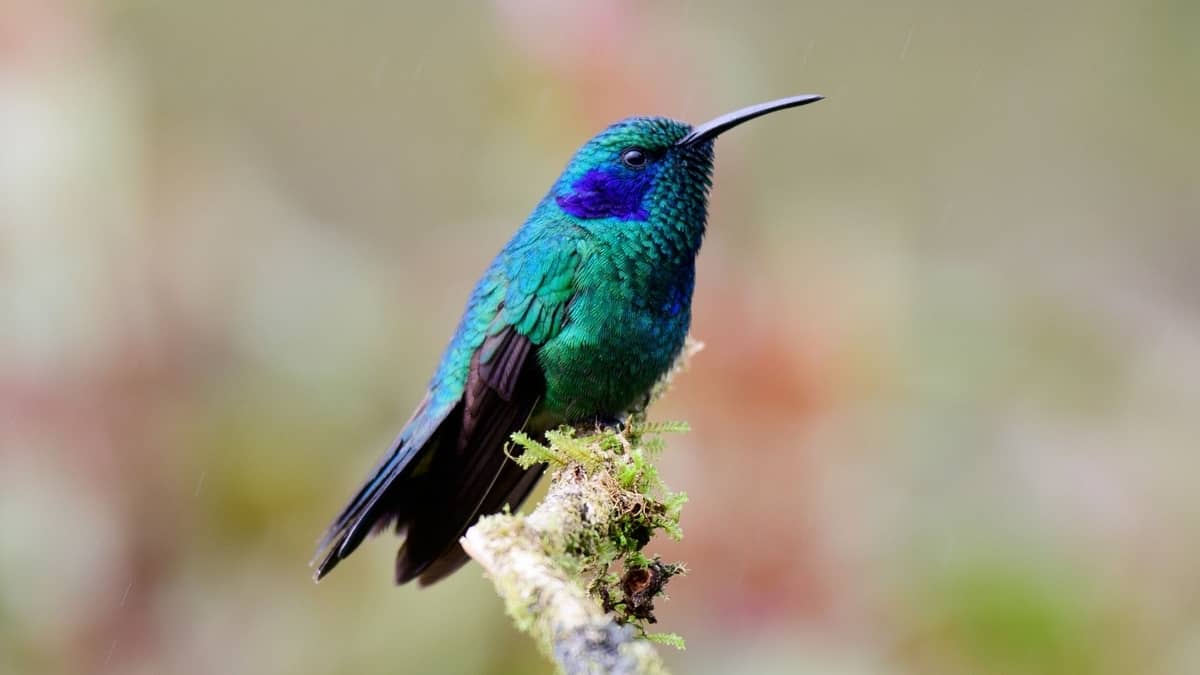Let’s look into when do hummingbirds return and leave Iowa. So, if you’re a resident of Iowa and you’re a hummingbird enthusiast, this information will really help you in preparing for the hummingbird’s arrival in your area.
One exciting way of enjoying nature is by watching lovely creatures of birds such as hummingbirds play around our yard or garden.
Hummingbirds’ arrival is usually during spring. So, hummingbird lovers should be on the watch as hummingbirds make their migration or arrival this spring in Iowa. These sweet iridescent birds spend winter in Central America and Mexico and make their way down to us during spring to nest and breed.
The precise period hummingbirds make their appearance slightly differs in each region. But if you reside in Iowa, we will be looking at when do hummingbirds return to Iowa. So, let’s begin.
When Do Hummingbirds Return To Iowa?
Hummingbird season in Iowa is spring. These lustrous birds tend to return to Iowa around the first week of May. But hummingbirds can also make an early appearance in Iowa around late April.
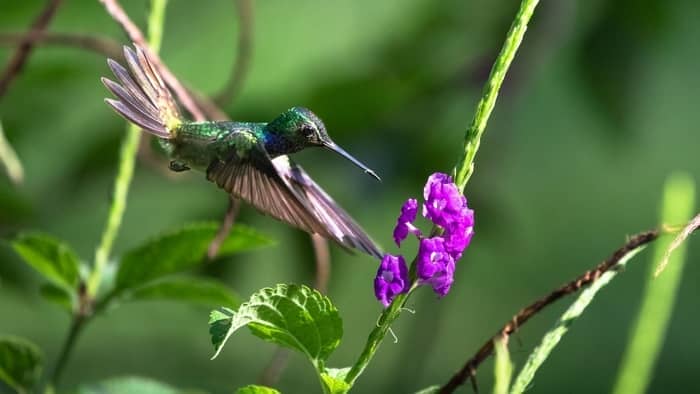
The make hummingbirds are usually the first to return to Iowa and they usually arrive to mark their feeding territory. Followed by the females two or three weeks later. The juvenile the hummingbird also follows.
So when hummingbirds do return to Iowa, this implies birders need to start making preparations for our feathered friends. Preparations such as making hummingbird feeders, planting flowers that hummingbirds are attracted to, and so on, are done by hummingbird enthusiasts.
When Do Hummingbirds Leave Iowa?
Hummingbirds tend to depart or leave Iowa around September to October. But some hummers can linger a bit and leave November.
The male hummingbirds are usually the first to depart Iowa. Then two or three weeks later, the female hummingbird follows then the juvenile hummers follow as well.
Once, the breeding season has come to an end, it is believed that hummingbirds can perceive changes in the weather and environment. Changes such as reduced number of daylight hours, flower blooming, and insects, initiate hummingbirds’ instinct to begin migration. Hence, hummingbirds begin migration in Iowa during this period.
Hummingbirds Found In Iowa
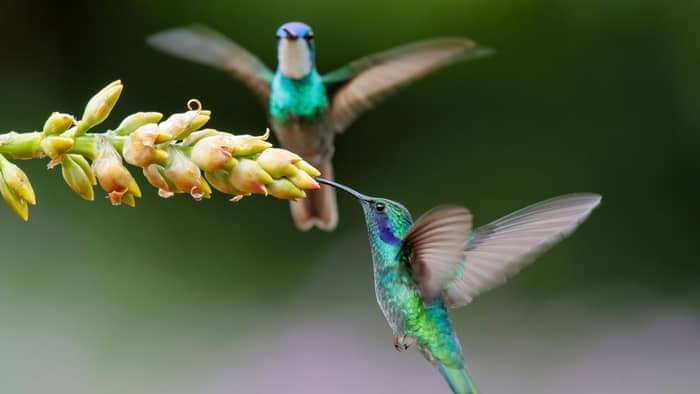
Overall, there are more than 300 species of hummingbirds known all over the world. Hummingbirds are native to the Americas. Sightings in North America have only been about 23 species of hummingbirds.
In Iowa, hummingbird species that have been documented here are about 4 or 5. The most frequently sighted hummingbird species in Iowa gardens is the Ruby-throated species. Then the Rufous hummingbird species is a casual visitor in Iowa.
The other hummingbird species found in Iowa are rare or accidental species. They include Anna’s hummingbird and Green violetears hummingbird. These rare species can also be referred to as passersby.
1. Ruby-throated Hummingbird Specie
Ruby-throated hummingbirds also known as Archilochus colubris are frequently sighted in Iowa. This hummingbird species tend to arrive in Iowa in early May. Some can make an early appearance around late April.
This hummingbird species are pretty territorial and aggressive. The male Ruby-throated arrives first to mark their feeding territories. Then two weeks later the female arrives followed by the juvenile hummers. The males are also the first to leave. Then by the end of September in Iowa, almost all Ruby-throated hummingbirds are usually gone.
Identified by their red ruby throat and white collar are the Ruby-throated males. They also have an emerald green back and a forked tail.
Identified by their green back are the females. Their tail feather are banded white, black, and grey.
2. Rufous Hummingbird Species
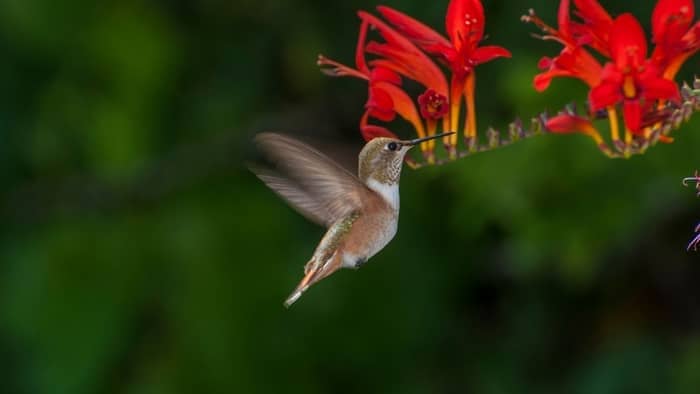
Rufous hummingbirds are also known as Selasphorus rufus. They are rare or causal visitors to Iowa. This hummers are also fearless birds. Seen chasing away other birds even bigger than their size.
Identified by their glossy orange-red throats are the male Rufous hummingbirds. The female on the other hand has whitish, speckled throats, green backs, and crowns.
3. Anna’s Hummingbird Species
Anna’s hummingbirds are scientifically known as Calypte ann. They are rare in Iowa. Sightings of these birds are few here. Anna’s hummingbirds are one of the bigger. Most are vocal hummingbirds. This hummingbird species are unique in that they are the only hummers capable of generating a song.
Anna’s hummingbird also tends to be territorial and aggressive. The male Anna’s hummingbird has been known to make an elaborate dive especially during mating and even at human beings.
Identified by their glossy dark rose-red throats and crowns are the males. Their throat can also appear dark purple in low light. The female Anna’s hummingbirds have their chest as light grey with white and red spotting on their throat. Their back is green and they have a white-tipped tail.
4. Green Violetears
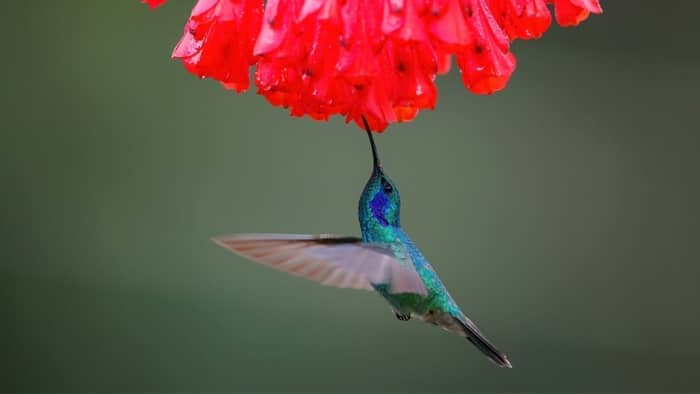
Green violetears are scientifically known as Colibri thalassinus. They are also called Mexican violetear. Sightings are very few here also. These hummingbird species are mostly residence of Mexico and Central America. However, some seasonal movements have been recorded in some states.
Green violetears are colorful birds that can wander north to the United States and as far north as Canada.
Identified by their grass green upper plumage that can change into a bronze color on the rump. The upper tail feathers are the adult male of Green violetears
The female Green violetears look similar to the male but they are smaller in size. Their plumage is a bit dull and they have a narrower violet band on their chin.
Read more about When Do Hummingbirds Leave Maryland?
When Do Hummingbirds Return To Iowa: Conclusion
When hummingbirds return to Iowa is around May. But some early arrival can return as early as April ending. Then hummingbirds will depart Iowa around September to October. By November, almost all the birds would have migrated or departed. So, they won’t return again until the next spring.
So, now that we know when hummingbirds return and leave Iowa, we can now make the necessary preparations to welcome our lustrous friends as they visit.

